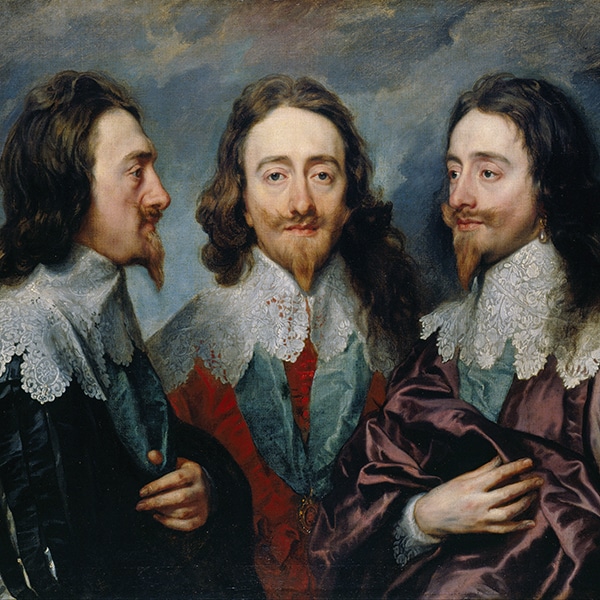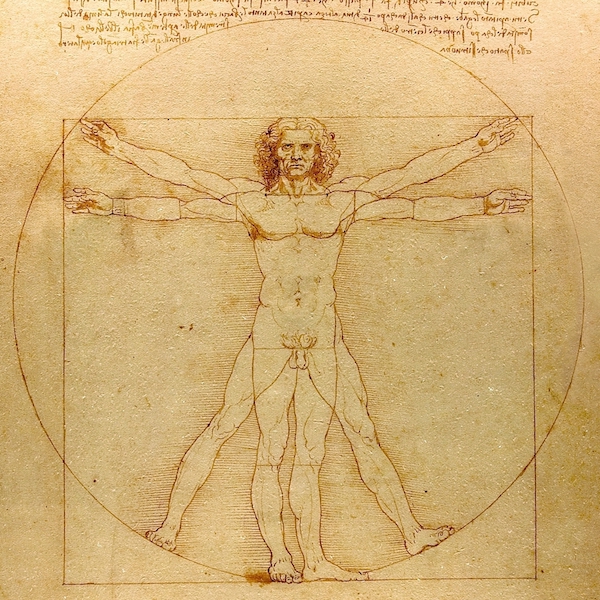
Pieter Bruegel the Elder, “The Dutch Proverbs,” 1559 (Photo: Google Arts & Culture, Public domain)
Birds of a feather flock together. When the cat's away, the mice will play. We all know and love these common, American proverbs. Sometimes ironic, often silly and amusing, these sayings test our brains—and our wit. And it's not just in English. Playing with language in literature, conversation, and art has been a hallmark of different cultures for centuries.
With this in mind, over 450 years ago, Dutch master Pieter Bruegel the Elder painted his incredible Netherlandish Proverbs. Also known as The Dutch Proverbs, this oil on wood painting is a detailed masterpiece that visually represents over 100 Dutch proverbs. Bruegel is known for his elaborately detailed work, and what seems at first like a simple village scene with a wide cast of characters, is soon revealed to be something more.
The Dutch proverbs reach far and wide. Some are quite similar to their American English counterparts, others have fallen out of usage, and others are simply delightfully amusing. Working your way across the panel, there is a treasure trove to discover, with figures acting out multiple phrases. There's even significance to color.

“She puts the blue cloak on her husband.” (She cheats on, or deceives, her husband.)
Pieter Bruegel the Elder, detail of “The Dutch Proverbs,” 1559 (Photo: Google Arts & Culture, Public domain)
For instance, in the case of the woman dressed in red at the center of the painting, it's impossible to read the proverb without understanding the color symbols. In 1559, when the piece was painted, red was a color of sin. At the same time, the blue cloak she's draping over her husband tells the other half of the tale. Blue often stood for cheating or folly, which lets us know that this woman isn't simply handing over her husband's coat, but rather cheating on him!
Follow along while we spell out some of our favorite Dutch proverbs, giving you the definition, or English/American equivalent, along with the original (when necessary). With Bruegel's creativity and imagination, it's incredible to think of how he managed to fit so much into one artwork.
And while you have to travel to Berlin's Gemäldegalerie to see the original, Google Arts & Culture has an excellent high-resolution image that lets you get into the details of each and every proverb. Just think of it as Bruegel's version of Where's Waldo, but with words.
To bang one's head against a brick wall.

Pieter Bruegel the Elder, detail of “The Dutch Proverbs,” 1559 (Photo: Google Arts & Culture, Public domain)
Move like your a** is on fire!

Pieter Bruegel the Elder, detail of “The Dutch Proverbs,” 1559 (Photo: Google Arts & Culture, Public domain)
One shears sheep, the other shears pigs. (One has all the advantages, the other has none.)

Pieter Bruegel the Elder, detail of “The Dutch Proverbs,” 1559 (Photo: Google Arts & Culture, Public domain)
It depends on the fall of the cards. (Let the chips falls where they may.)

Pieter Bruegel the Elder, detail of “The Dutch Proverbs,” 1559 (Photo: Google Arts & Culture, Public domain)
Two fools under one hood. (Stupidity loves company.)

Pieter Bruegel the Elder, detail of “The Dutch Proverbs,” 1559 (Photo: Google Arts & Culture, Public domain)
To be pissing against the moon. (To be pissing into the wind.)

Pieter Bruegel the Elder, detail of “The Dutch Proverbs,” 1559 (Photo: Google Arts & Culture, Public domain)
They both crap through the same hole. (Bosom buddies.)

Pieter Bruegel the Elder, detail of “The Dutch Proverbs,” 1559 (Photo: Google Arts & Culture, Public domain)
If the blind lead the blind, both will fall in the ditch. (The blind leading the blind.)

Pieter Bruegel the Elder, detail of “The Dutch Proverbs,” 1559 (Photo: Google Arts & Culture, Public domain)
It is ill to swim against the current. (An uphill battle.)

Pieter Bruegel the Elder, detail of “The Dutch Proverbs,” 1559 (Photo: Google Arts & Culture, Public domain)
He who has spilt his porridge cannot scrape it all up again. (Don't cry over spilt milk.)

Pieter Bruegel the Elder, detail of “The Dutch Proverbs,” 1559 (Photo: Google Arts & Culture, Public domain)
Two dogs over one bone seldom agree. (To argue uselessly over a single point).

Pieter Bruegel the Elder, detail of “The Dutch Proverbs,” 1559 (Photo: Google Arts & Culture, Public domain)
Sitting on hot coals. (To be impatient.)
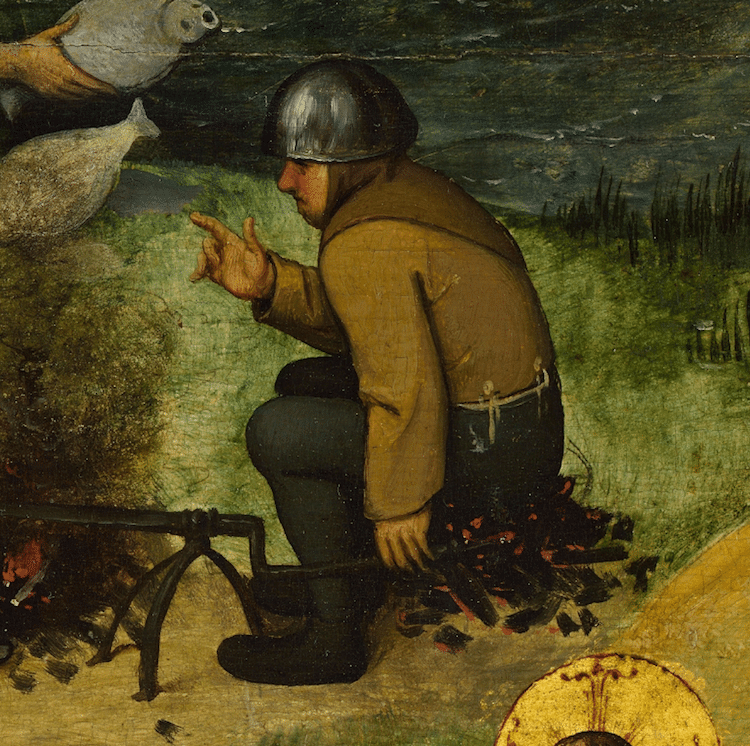
Pieter Bruegel the Elder, detail of “The Dutch Proverbs,” 1559 (Photo: Google Arts & Culture, Public domain)
To hang one's cloak according to the wind. (To adapt one's viewpoint to the current opinion.)

Pieter Bruegel the Elder, detail of “The Dutch Proverbs,” 1559 (Photo: Google Arts & Culture, Public domain)
The whole world is upside down.

Pieter Bruegel the Elder, detail of “The Dutch Proverbs,” 1559 (Photo: Google Arts & Culture, Public domain)
To have the roof tiled with tarts. (To be very wealthy).
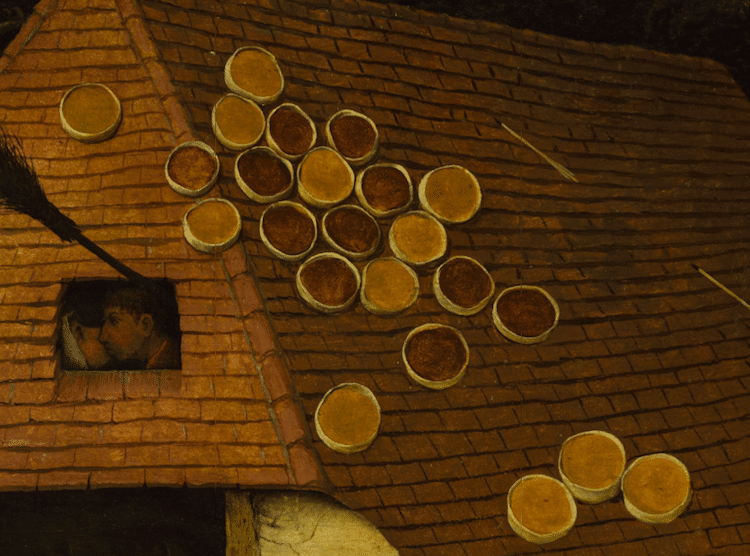
Pieter Bruegel the Elder, detail of “The Dutch Proverbs,” 1559 (Photo: Google Arts & Culture, Public domain)
To sit between two stools in the ashes. (To be indecisive.)

Pieter Bruegel the Elder, detail of “The Dutch Proverbs,” 1559 (Photo: Google Arts & Culture, Public domain)
To be able to tie even the devil to a pillow. (Perseverance overcomes everything.)

Pieter Bruegel the Elder, detail of “The Dutch Proverbs,” 1559 (Photo: Google Arts & Culture, Public domain)
To crap on the world. (To despise everything.)

Pieter Bruegel the Elder, detail of “The Dutch Proverbs,” 1559 (Photo: Google Arts & Culture, Public domain)
A pillar-biter. (A religious hypocrite.)

Pieter Bruegel the Elder, detail of “The Dutch Proverbs,” 1559 (Photo: Google Arts & Culture, Public domain)
To lead each other by the nose. (To fool each other.)
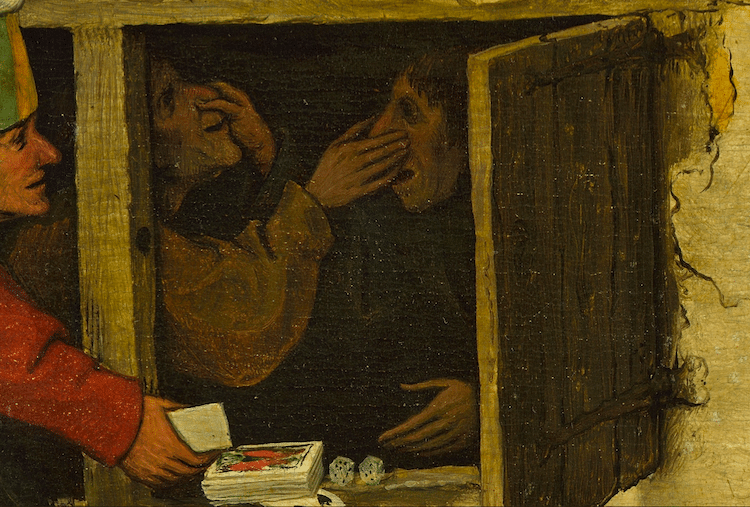
Pieter Bruegel the Elder, detail of “The Dutch Proverbs,” 1559 (Photo: Google Arts & Culture, Public domain)
To have the world spinning on one's thumb. (To have the world in the palm of your hand.)

Pieter Bruegel the Elder, detail of “The Dutch Proverbs,” 1559 (Photo: Google Arts & Culture, Public domain)
To put a spoke in someone's wheel. (To throw a wrench in someone's plans.)

Pieter Bruegel the Elder, detail of “The Dutch Proverbs,” 1559 (Photo: Google Arts & Culture, Public domain)
Horse droppings are not figs. (Appearances are deceiving.)

Pieter Bruegel the Elder, detail of “The Dutch Proverbs,” 1559 (Photo: Google Arts & Culture, Public domain)
To try to kill two flies with one stroke. (To kill two birds with one stone.)

Pieter Bruegel the Elder, detail of “The Dutch Proverbs,” 1559 (Photo: Google Arts & Culture, Public domain)
To marry under the broomstick. (To live together without marrying.)

Pieter Bruegel the Elder, detail of “The Dutch Proverbs,” 1559 (Photo: Google Arts & Culture, Public domain)
To look through one's fingers. (To turn a blind eye.)

Pieter Bruegel the Elder, detail of “The Dutch Proverbs,” 1559 (Photo: Google Arts & Culture, Public domain)
The die is cast. (The decision is made.)

Pieter Bruegel the Elder, detail of “The Dutch Proverbs,” 1559 (Photo: Google Arts & Culture, Public domain)
Leave an egg in the nest. (Always have something in reserve.)

Pieter Bruegel the Elder, detail of “The Dutch Proverbs,” 1559 (Photo: Google Arts & Culture, Public domain)
There is more in it than an empty herring. (There is more than meets the eye.)
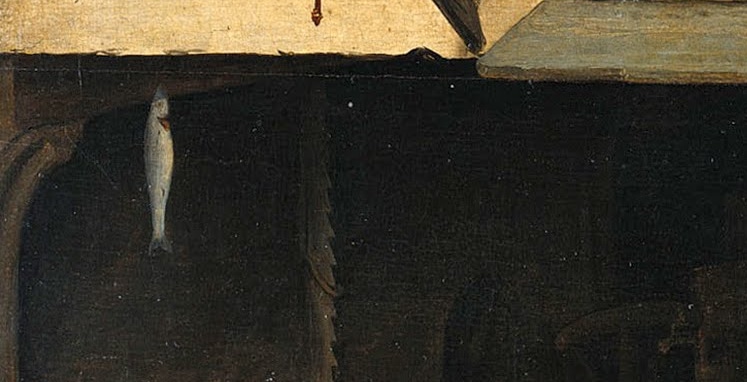
Pieter Bruegel the Elder, detail of “The Dutch Proverbs,” 1559 (Photo: Google Arts & Culture, Public domain)
Watch this video to learn more about this painting:
All images via Google Cultural Institute.
This article has been edited and updated.
Related Articles:
Vanitas: Paintings by the Dutch Old Masters Inspired by Life and Death
Girl With a Pearl Earring: Unraveling the Mysterious Masterpiece of the Dutch Golden Age
10 Famous Baroque Artists Whose Awe-inspiring Art Still Inspires Us Today
Why Rembrandt Is Considered One of Art History’s Most Important Old Masters













































































